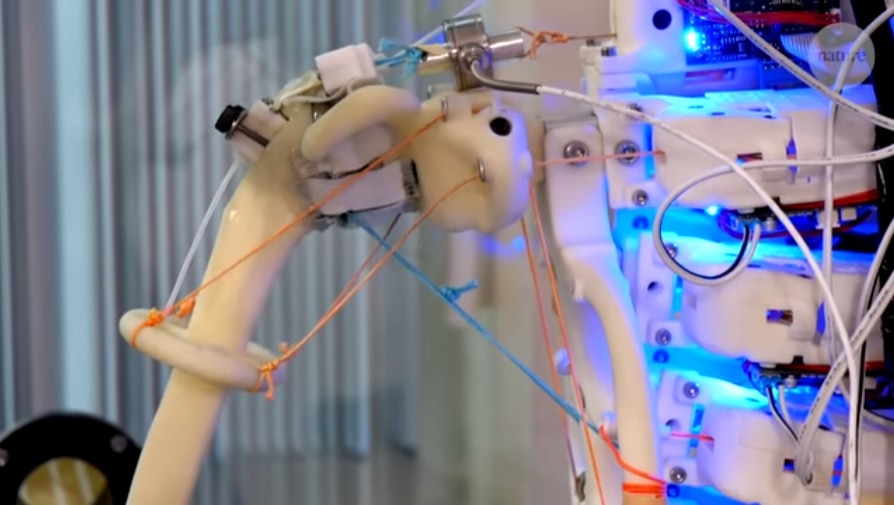Create a free profile to get unlimited access to exclusive videos, sweepstakes, and more!
Growing human tendon tissue on robot skeletons
Are your tendons robotic or did you grow them yourself?

In Alex Garland’s 2014 science fiction film Ex Machina, the CEO of a secretive tech company has built an advanced artificial intelligence in a realistic — if still mechanical — humanoid body. While the mind inside the body is the truly impressive feat, a robot which is able to convincingly mimic the structure and movements of the human body is nothing to scoff at. Despite recent advancements from places like Boston Dynamics, we’re not quite there yet, but scientists are now using a humanoid robotic shoulder to grow actual human tissues. Those tissues aren’t for the robots though, they’re for us.
Pierre-Alexis Mouthuy from the Botnar Institute of Musculoskeletal Sciences at Oxford University, and colleagues, have constructed a bioreactor which is built on a scaffold resembling the human shoulder. Inside the reactor, they’re growing human tendon tissues in hopes of advancing transplant and rehabilitation therapies. Their findings were published in the journal Communications Engineering.
“What we’ve done is demonstrated the possibility of growing cells on humanoid robots and mechanically stimulating them,” Mouthuy told SYFY WIRE. “Now, we’re comparing it to traditional systems to show there’s a real benefit.”
Previous efforts to grow human tendon tissues have been met with some difficulty, owing to the unique pressures those tissues undergo in the body. While we’re capable of growing tissues in a laboratory setting, they often don’t hold up once implemented. That’s because they lack the elasticity needed to function as a working tendon.
One hypothesis behind why engineered tendon tissues don’t mirror natural tissues in elasticity is a lack of stressors while they’re growing. In the body, even while your tendons are developing, they’re under pressure from the rest of your body and the environment. You’re constantly pushing, pulling, and twisting your tendons even if you don’t realize it. Those stresses might be necessary in order for them to grow in the right ways.
“There are existing systems that use robotics to mechanically stimulate tissue constructs and we know that makes a difference to the quality of the tissue. But these systems only offer unidirectional stretching which isn’t what the tissues experience in the body,” Mouthuy said.
By mimicking the actual layout of a human shoulder, scientists are able to apply multidirectional stresses which more closely resemble what the tissues would experience in the body. In addition to the stretching offered by previous systems, the new robotic shoulder also compresses and twists the tissues.
Another challenge to growing tissues outside of the body is getting them to build three-dimensional structures instead of flat sheets of cells. Cardiac cells grown in a petri dish, for instance, just grow a flat sheet of cardiac cells, they don’t form themselves into a heart. While tendons aren’t as complex as a heart, researchers are taking steps to solve for this problem.
“To tackle the problem of three-dimensionality, we’re working with 3D scaffolds. We work with something the cells can grow into to create something of a size and dimension similar to what you’d find in the body,” Mouthuy said.
The aim is to provide clinics with tissue grafts grown in a bioreactor and improve the quality of surgical tendon repairs. Moreover, scientists believe if it works with a shoulder joint then the same process should apply to other tissue types, like ligaments and cartilage, and other joint locations in the body. In the meantime, their robotic shoulder could offer useful insight for researching synthetic tissue replacement materials and rehabilitation.
“You could screen through materials to see if there are any issues and redesign early on. We also think we could test rehabilitation exercises to find which ones are best for building a particular tissue by looking at how the cells respond to different mechanical stresses,” Mouthuy said.
Scientists estimate that we’re at least 15 years from this technology reaching a clinical setting, but if it works out, it could offer a less dystopian alternative to growing clones for body parts. Fingers crossed.


























